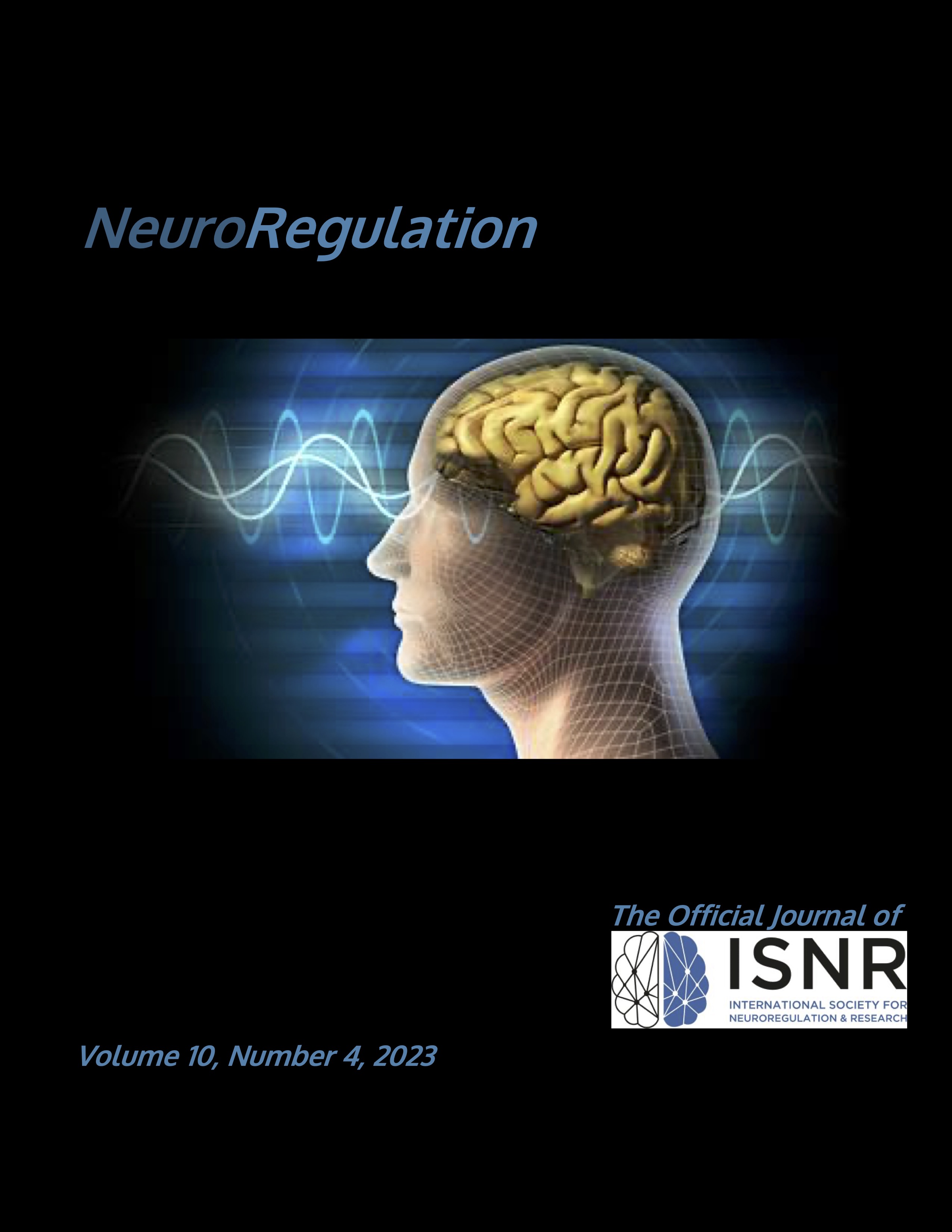Hemodynamic and Pulmonary Safety Profile of the Accelerated Neuroregulation Procedure
DOI:
https://doi.org/10.15540/nr.10.4.253Keywords:
opioid use disorder (OUD), accelerated neuroregulation (ANR), opioid dependency, opioid dependency treatment, ; opioid dependency treatment safety, ANR safety, ANR physiological responseAbstract
Background. Opioid use disorder (OUD) affects an estimated 26.8 million people globally (Strang et al., 2020). In 2020, opioid overdose visits in the United States increased by 28 percent (Harringa, 2021). Opioid-dependent individuals now comprise an internationally and nationally recognized vulnerable population (Harringa, 2021). Effective, proven, and safe treatments for OUD are needed to improve quality of life and life expectancy and to decrease international and national costs of care for this vulnerable population (Florence et al., 2016). Accelerated neuroregulation (ANR) is an internationally recognized protocol for treatment of OUD and has been utilized for over 20 years in hospitals in Israel, Switzerland, Brazil, Georgia, and other countries. Methods. This study is a retrospective review conducted by a team of healthcare providers based on the medical record documentation of patients who underwent the ANR procedure and subsequent follow-up care at the ANR clinic located in Florida. Following review of clinical case data, a comparative of patient hemodynamic and pulmonary stability was selected as the criteria to evaluate the procedure’s safety. Results. The study assessed a sample group of patients treated with the ANR procedure. The sample group consisted of 50 individuals who underwent the ANR procedure between November 2020 and February 2021. All patients treated during this period were included in the sample size, no exclusions were applied. Conclusion. The study analysis demonstrates that ANR procedures are a safe and effective treatment for OUD based on the stability of hemodynamic and pulmonary physiological response data.
References
American Heart Association. (2021a). Target heart rates chart. American Heart Association. https://www.heart.org/en/healthy-living/fitness/fitness-basics/target-heart-rates
American Heart Association. (2021b). Understanding blood pressure readings. American Heart Association. https://www.heart.org/en/health-topics/high-blood-pressure/understanding-blood-pressure-readings
American Hospital Association. (2020, July 16). CDC: Drug overdose deaths up 4.6% in 2019. Centers for Disease Control and Prevention (CDC). https://www.aha.org/news/headline/2020-07-16-cdc-drug-overdose-deaths-46-2019
American Society of Anesthesiologists. (2020, December 13). ASA physical status classification system. American Society of Anesthesiologists-Economics Committee. https://www.asahq.org/standards-and-guidelines/asa-physical-status-classification-system
Centers for Disease Control and Prevention. (2021). High blood pressure symptoms and causes. Centers for Disease Control and Prevention. https://www.cdc.gov/bloodpressure/about.htm
Florence, C., Zhou, C., Luo, F., & Xu, L. (2016). The economic burden of prescription opioid overdose, abuse, and dependence in the United States, 2013. Medical Care 54(10), 901–906. https://doi.org/10.1097/MLR.0000000000000625
Harringa, A. (2021, July 26). Emergency department visits related to opioid overdoses up significantly during COVID-19 pandemic. Mayo Clinic. https://newsnetwork.mayoclinic.org/discussion/emergency-department-visits-related-to-opioid-overdoses-up-significantly-during-covid-19-pandemic/
Shah, M., & Huecker, M.R. (2023, April 29). Opioid withdrawal. Stat Pearls [Internet]. Stat Pearls Publishing. https://www.ncbi.nlm.nih.gov/books/NBK526012/
Shaikh, J. (2022, December 21). What are blood oxygen levels? MedicineNet. https://www.medicinenet.com/what_are_blood_oxygen_levels/article.htm
Strang, J., Volkow, N. D., Degenhardt, L., Hickman, M., Johnson, K., Koob, G. F., Marshall, B. D. L., Tyndall, M., & Walsh, S. L. (2020). Opioid use disorder. Nature Reviews: Disease Primers, 6(1), Article 3. https://doi.org/10.1038/s41572-019-0137-5
Downloads
Published
Issue
Section
License
Copyright (c) 2023 Andre Waismann, MD, Albert Kabemba, MD, Olga Medowska, Robert Salzman, Cathy Philpott, Milesh M. Patel

This work is licensed under a Creative Commons Attribution 4.0 International License.
Authors who publish with this journal agree to the following terms:- Authors retain copyright and grant the journal right of first publication with the work simultaneously licensed under a Creative Commons Attribution License (CC-BY) that allows others to share the work with an acknowledgement of the work's authorship and initial publication in this journal.
- Authors are able to enter into separate, additional contractual arrangements for the non-exclusive distribution of the journal's published version of the work (e.g., post it to an institutional repository or publish it in a book), with an acknowledgement of its initial publication in this journal.
- Authors are permitted and encouraged to post their work online (e.g., in institutional repositories or on their website) prior to and during the submission process, as it can lead to productive exchanges, as well as earlier and greater citation of published work (See The Effect of Open Access).











